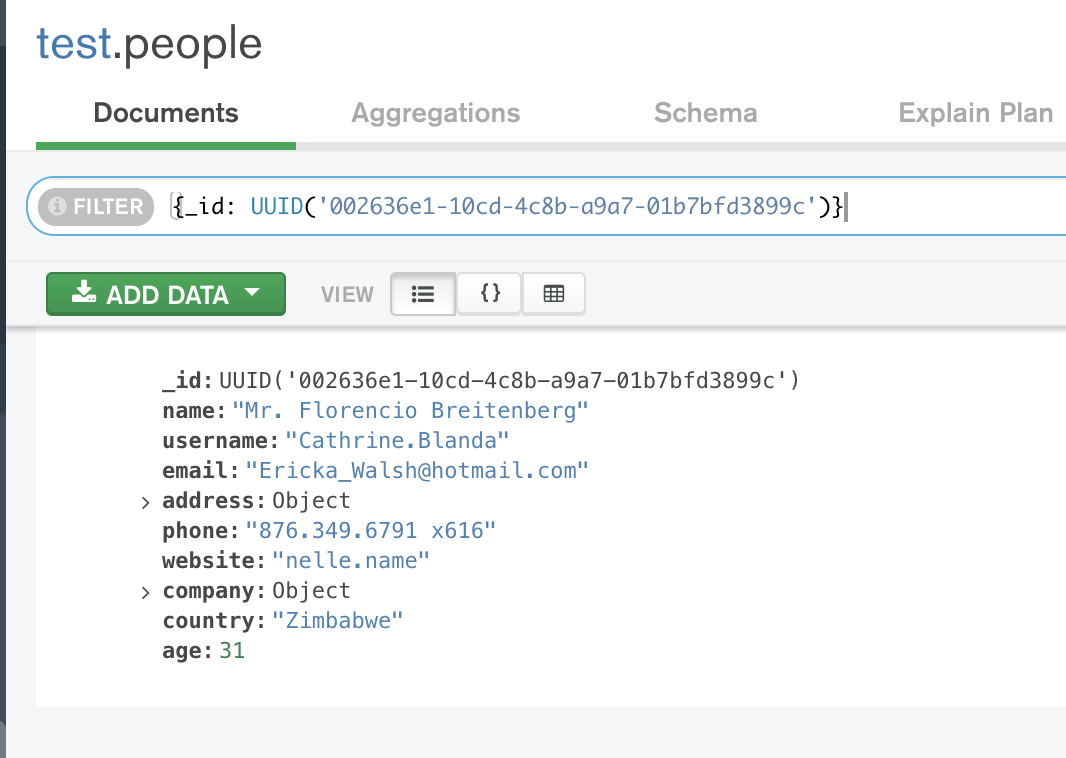

find() to query our collection, we can actually modify our syntax ever so slightly and begin searching for matches based on a word or phrase that may be a partial match within a given field, similar to the LIKE operator for SQL engines.

That’s a lot of burgers! Searching for Word Similarities Using Regex

We have used read concern levels as local to display the result.> db. In the below example, we have to count the documents that match query from emp_count table using count method in MongoDB.ĭb.runCommand ( )Įxample #4 – Count using default read concernīelow is the example of count using default read concern in MongoDB. Example #2 – Count documents that match a query We have to find a count of documents in two ways. The count of all the documents in emp_count table is 12. In the below example, we have count all documents from emp_count table using count method in MongoDB. Below is the data description of emp_count table as follows.Įxample #1 – Count all documents from a collection We are taking the example of the emp_count table to describe the example of the count method in MongoDB. Count method is essential and useful to display the count of all or specified documents.For fast retrieval count of documents, we are using an index with count method. We have also used the index to return the count of the documents.Skip is used to skip the count of documents. We can skip the count of collection documents using the skip parameter.The default override read concern level of count method in it is local.If we want to a read concern level as the majority, then we need to specify a nonempty query condition. We can define read concern levels as local and majority.But instead of finding, if we have use count, it will display the only actual count of collection.If we have used find method to show the data of collections, it will show all the data.It is handy in a large document of collections to find the no of documents only instead of displaying all the data.The count is significant and useful to find the actual count of documents.We have found the number of documents using the count method in MongoDB.MongoDB count is used to counting the no of the document from collections.Collation is an optional parameter of the count method.īelow is the working of count method in MongoDB. Collation: Collation is used to the operation of count in MongoDB.The level is specified that the default level of real concern. Read concern: Read concern is an optional parameter.This specifies that the index name is either string or either it is documented. We can skip the number of matching documents before returning the result of the count of collection documents. Skip: Skip is an optional parameter of the count method.We can return the maximum number of counts from the collection using limit. Limit: Limit is an optional parameter of the count method.Using the query, we have filtered the results of documents from collections. Query: We can use a specified query to find the count of documents mentioned in the query.Count: It is used to count the no of the document from collections, we have found the number of documents using the count method.Collection name: Collection name is used to display the count of documents from the collection.collation: : This is also optional parameter of count method.īelow is the parameter description of the above syntax:.readConcern: : The default read concern level of MongoDB is local.hint: : This is optional parameter of count method in MongoDB.skip: : Matching documents will skip before returning the result of a query.limit: : This is optional parameter of count method in MongoDB.query: : Query used to count of documents as per query specified.count: : Count the collection or view documents.Hadoop, Data Science, Statistics & others


 0 kommentar(er)
0 kommentar(er)
